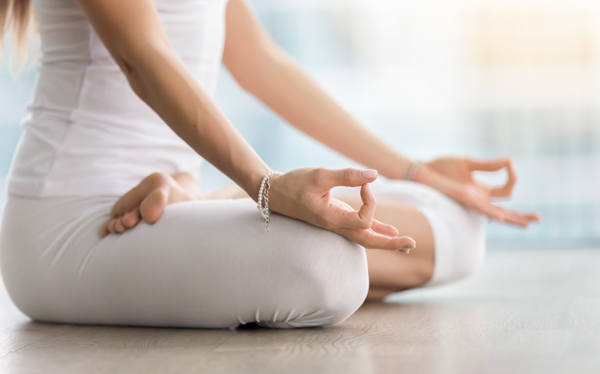Now that the holiday season is in full swing, it’s time to talk new year resolutions. If your goals include slowing down, getting in shape, and being less stressed, you might want to consider creating a yoga and meditation room, or simply a room in your home designed to be a quiet retreat from your bustling day.
Yoga has made the mainstream as one of the most popular ways in the U.S. to get in shape and unwind. While it’s great to connect with fellow yogis at your local yoga studio – and there are many in Cincinnati and the surrounding area — you can also get a great yoga practice in at home (in fact, most teachers will tell you the ultimate goal is your own home practice.)
The great thing about yoga is that all you really need is a yoga mat. But it makes it so much more of an experience if you can do yoga in a room designed just for that and meditation, too.
Of course, if you’re idea of a workout is hitting the gym or a heavy bag, you could still benefit from a peaceful place in your home where you can stretch and enjoy relaxing activities like reading or listening to music.
Ready to unwind and renew at home? Here are some design and decorating tips to help get you started on your home yoga and mediation room.
Flooring
If you’re designing a yoga room from top to bottom, your first decision is to choose a wood or laminate floor or carpet. Ideally, the flooring would be wood or bamboo as carpet can be too soft and not support your joints properly. However, berber carpet would be a good alternative, especially if your room is on a top floor, because it can help with noise reduction from the floors below.
Another option is to invest in a radiant floor created with an underfloor system that uses electric cables or hydronics. You could also use infrared heating panels which are silent and attach to the ceiling, so they won’t disturb your practice.
Walls
In yoga, you use the wall for supported poses like handstands and restorative postures like laying on your back with your legs up the wall (this slows your breathing down and is very relaxing). With this in mind, you’ll want to keep framed art to a minimum, and for the very ultimate in stress relief, keep wall clocks out of the room, too.
Choose paint that’s soothing in color, like a pale blue or green, and make sure it’s a washable paint so you can clean the walls if you get marks on them doing your practice.
Keep it clutter free
The purpose of yoga is to de-clutter the mind, so your yoga room should be free of clutter, too. Keep your accessories to a minimum – maybe one scented candle that offers subtle aroma therapy, a simple vase with fresh flowers, or a favorite saying (or “mantra”) stenciled on the wall (We love these mandala stencils on Etsy.com).
You could also add favorite photos of loved one and other items that inspire you like shells from a vacation, or healing stones and gems to a small table that serves as a focal point for your practice. Indian deity statues like this gorgeous antique one of Ganesh, create beautiful ambiance for your studio.
Lighting
One of the easiest and best ways to set a mood in any part of your home is through lighting. For your yoga and meditation room, choose dimmable lights so that you can control the mood you want. You could keep the lights brighter for a vigorous practice and dim them when you’re ready to meditate or for deep relaxation.
We love the idea of several small recessed lights embedded in the ceiling that you can dim to evoke the feeling of being under the stars.
Regardless of the kind of lights you choose, you’ll want to use as much natural light as possible.
Yoga and meditation props
Yoga props like bolsters, blocks and straps can help you get the most benefit out of poses. For example, not everyone can bend down and touch the floor, but you may be able to bend down and touch a block.
Have at least two blocks on hand for your practice. Hard foam blocks are ideal for restorative poses where you’ll be resting on them for minutes at a time, while harder cork blocks are great for weight-bearing poses like hand and arm balances.
Bolsters, cushions and sturdy wool blankets are great for restorative poses and for meditation, where comfort is essential when sitting to quiet the mind. You could also try cushions specifically designed for meditation.
Other ways to use the yoga room
One great way to get more benefit from your yoga room is to multipurpose it. Keep a massage table in it for at-home massage therapy, or keep a couch or other comfy seating in the room so you can retreat someplace quiet to read a good book, sip tea or enjoy morning coffee. You could even entertain with a small group of friends for a relaxing wine night.
Musicians love yoga spaces, too. Depending on your flooring and size of the room, the acoustics could be good enough for a singer or instrumentalist to practice in and like what they hear.
Ready to get started? With just a little planning and effort, you can transform a room into a peaceful oasis and create a new year’s resolution you can stick to.


